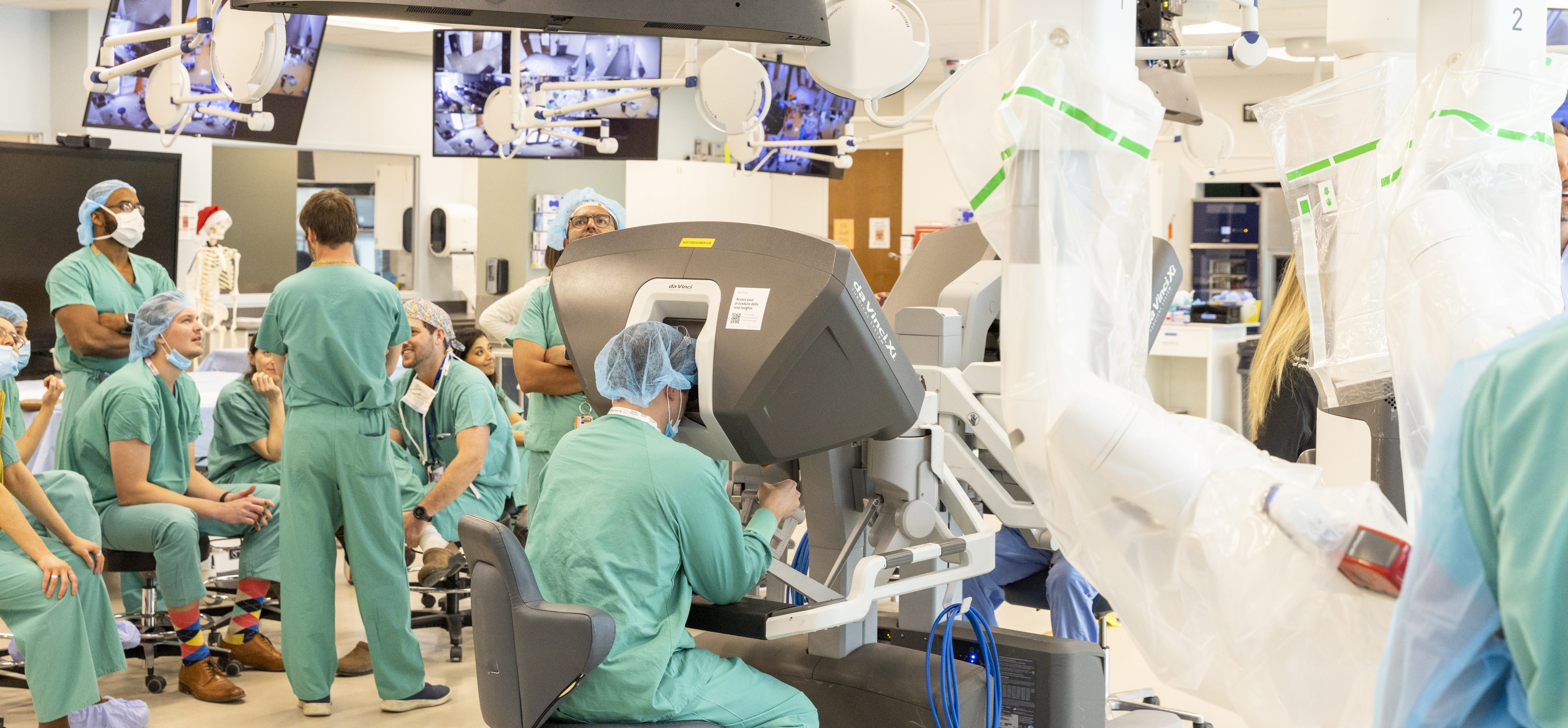Patient Care
The Division of Urology has developed a high quality multi-faceted foundation in clinical practice, clinical research and basic science investigation, teaching and service.
In the areas of male reproductive medicine, female incontinence, voiding dysfunction, and reconstructive surgery, kidney stone disease, urologic oncology, pediatric urology, and the management of urologic trauma, the Division is recognized as one of the most dynamic and productive urology programs in the country. This foundation allows the Division to offer state-of-the-art urological care to patients throughout the Rocky Mountain region and the nation. As well, superb medical student and resident education and a dynamic and expanding NIH-funded research program are the additional cornerstones of the Division of Urology.
Clinical Specialties
The physician faculty of the Division of Urology at the University of Colorado School of Medicine, located in Aurora, Colorado, provides state-of-the-art medical and surgical Urology care. All of our urologists are fellowship-trained in their sub-specialty.
The University of Colorado Urology faculty is engaged in a wide variety of research activities with the goal of understanding urological disease and bringing new treatments to patients as quickly and as safely as possible. We are committed to training a new generation of urologic surgeons and work closely with our resident and fellow physicians as they learn the art and science of the practice of Urology.
To explore the sub-specialties represented at CU, use the tabs at the top left or the buttons below.
What We Do
Practice Locations
Looking to schedule an appointment? Check out our many offices below to find a convenient location for you.
Aurora - University of Colorado Anschutz Medical Center - (720) 848-1800
Anschutz Medical Center is the largest hospital campus in Colorado, hosting comprehensive care and treatment for any concern you may have. CU Urology at Anschutz hosts:
- Urogynecology
- Reconstructive urology
- Men's health
- Fertility
- Surgical urology
- The Tony Grampsas Urologic Cancer Care Clinic
Highlands Ranch - Highlands Ranch Specialty Care Center - (303) 265-3940
CU Urology at Highlands Ranch Specialty Care Center hosts a combined Urology and Urologic Oncology program, treating a variety of urological conditions and cancers.
- General urology
- Men's health - Peyronie's disease, low T, erectile dysfunction
- Urogynecology
- Fertility and infertility
- Urologic oncology - prostate, kidney, bladder, and testicular cancers
- Surgical urology
Cherry Creek - Cherry Creek Medical Center - (303) 265-3940
Cherry Creek Medical Center offers convenient general urological care. CU Medicine Urology at Cherry Creek hosts:
- General urology
- Urologic oncology
- Men's health
